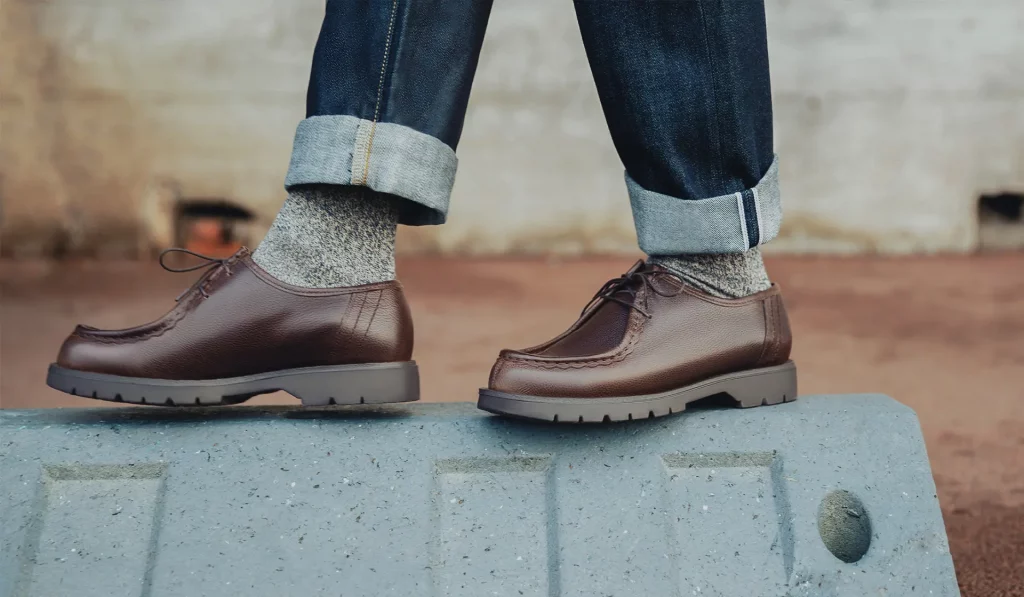Do your shoes always feel tight around your toes and the balls of your feet? If so, you may have wide feet. While normal width shoes can fit most of the population, many people still develop issues like bunions, crossover toes, and metatarsalgia because the shoes they buy from regular retailers are too tight.
But the answer to this problem isn’t as simple as going out and purchasing wide shoes. Just like pants sizes, there are several different width shoes that can come in, and your perfect fit may be an unconventional one. Keep reading to learn the differences between all the main shoe width sizes.
#1. Narrow shoes: A/2A/4A Widths
The first width is what’s known as “narrow.” Narrow shoes are typically marked with an “A” on their label and have the tightest fit around your foot. If you have small, slim feet, you’ll probably find that these shoes fit the best.
Narrow shoes can be further broken down to different degrees of narrowness. A, the most common option, is considered narrow for women and extra narrow for men. Then, 2A, 3A, 4A, or, alternatively denoted as AA, AAA, and AAAA, get progressively narrower.
Narrow shoes are also sometimes referred to as “slim” or “extra slim”.
#2. Medium to Narrow Shoes: B Widths
The second width is “B”. B-width shoes are considered average for women and narrow for men. They’re not as snug around your feet as A-widths, but they’re still designed to fit feet that are on the more petite end of the spectrum.
Most women’s shoes are B width, especially if they’re formal shoes like high heels. So, if there’s no width marked on your shoes, it’s safe to assume they’re B if they came from the women’s section. B-width shoes are also sometimes called “regular” or “standard”.
#3. Medium to Wide Shoes: D Widths
The third width is “D”. D-width shoes are average for men and wide for women. They’re designed to fit feet that are a bit more robust than those that fit in B-width shoes. In the same way, B widths are standard for women, D widths are standard for men, and your average men’s shoe that doesn’t have a clear width size marked will probably be D width.
D width shoes will be marked as “regular” or “standard” for men and “wide” for women. So, if you’re a woman who feels slightly uncomfortable in most women’s shoes, it might be best to search for wide toe box shoes for women in the D size range.
#4. Wide to Extra Wide: E/2E/4E Widths
E width shoes are considered wide for men and extra wide for women. They’re designed to fit feet that are on the larger, wider end of the spectrum.
Like narrow A width shoes, E width shoes get progressively larger as extra Es get added. 2E and 4E, sometimes called EE or EEEE, are extra wide, with 6E and higher also being available from select manufacturers.
If you’re looking for wide toe box shoes for men, E width shoes are probably your best bet.
How to Measure Your Shoe Width
The easiest way to find your shoe width is to try on different shoes until you find a pair that fits comfortably without being too loose or too tight. Keep in mind that you should check this by upping or lowering width rather than the overall shoe size to get an accurate idea of your true width.
You can also check your width more professionally by using the Brannock Device, a foot measuring device that is available to use at most shoe stores.
Conclusion
If regular shoes are too tight, you don’t have to struggle between discomfort and wearing shoes that are too long for you. Finding your correct shoe width can help you avoid pain and discomfort, and can even help you prevent foot problems.
